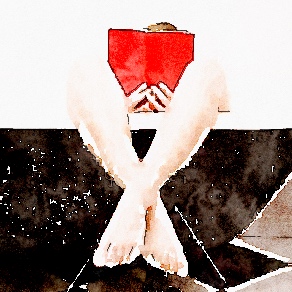Images of Spain.
But not in the form of the sickeningly familiar, glossy pictures of crowded beaches on the Mediterranean coast with their ugly hotel developments serving as backdrop, nor those of flamenco and bull-fights, nor yet the image that we receive through the daily news of RTE of a corrupt political and business élite, the pollution over Madrid or the meaningless posturing over the status of Gibraltar or Catalonian independence.
The images of Spain presented to us by the Dutch author Cees Nooteboom in his book Roads to Santiago go far deeper than the stereotypes that we are all familiar with. He searches for – and finds – a different Spain: one that is more ancient, more elemental, more real, if you will. A Spain that would take a lifetime of living there to get to know, even just a little.

As you can guess, Roads to Santiago is not a guide book, although you could do much worse than follow in the author’s footsteps.
The Way of St James
At some point in life, Nooteboom decided to the make the pilgrimage to Santiago de Compostela. It’s a popular pilgrimage even today, and most of those who walk the so-called Way of St James, the Camino de Santiago, probably no longer do so for religious reasons but for the love of walking and the love of Spain. There’s more than one route, depending on where you come from, and the most popular is probably the camino francés, the French path, coming as it does across the Pyrenees and weaving through the north of Spain. But this is not what Nooteboom did.
To begin with, he didn’t walk.
All Roads Lead to Santiago
Because Roads to Santiago is the retelling of not one journey but many. It’s the result of years of travelling in Spain, of being diverted by intriguing sign posts, of mooching alone in ruined Romanesque churches in barely accessible locations, of following Don Quijote through the deserted villages of La Mancha, of walking in the echoing halls of the Prado. If you travel with Nooteboom, you get to see more than the olive groves of Andalusia.
In the course of reading the book, you learn much about Spain and much about Nooteboom, the man himself. He seems somewhat religiously inclined: he is fascinated by churches and by Zurbarán, that great painter of – monks. In fact, Nooteboom was brought up in a boarding school, educated by monks and at some point in his life he actually wanted to join the Trappists.
And so, like I said, at some point he decided to go to Santiago de Compostela, and eventually, after many detours, he got there. To these detours we owe Roads to Santiago, this strange amalgam of art, history and travel, a thoroughly fascinating book.

Saint Francis in Meditation
1635-9
Oil on canvas, 152 x 99 cm
Bought, 1853
NG230
https://www.nationalgallery.org.uk/paintings/NG230
Torla 1957
Nooteboom stops in Torla and remembers what Spain was like in 1957. And suddenly it finally sinks in that this Spain of Nooteboom’s I’ve been reading about is 30 years old, it’s the Spain of my youth that I’ve never seen, not the Spain that I know. I drop the book on my lap and remember the places I’ve seen in my youth. The countries that no longer exist, the places I returned to as Nooteboom returned to Spain… I’m conscious of the passage of time, and the realisation of how little we can experience of the beauty of this transient world before we die makes me melancholic.
Torla. In 1957 there was only one solitary inn. I had arrived by bus, an ancient bus with cardboard boxes on the roof, and wooden crates with chickens. Farmers smoking Ideales, a heavy, pungent aroma. Trout, and goat meat and great loaves of bread. I wish I could glimpse myself as I was then. I would not recognise myself any more than I recognise the village, what with the hotels, pensions, and the entrance to the National Park of Ordesa.
I drive up the mountain until the snow gets too thick and I see the high peak of the Monte Perdido, the lost mountain. The map of this area is dotted with deer. There were still bears here in the fifties, and I remember thinking then, that one day I might see a bear. Perhaps I still think so. I have cut the engine to hear the silence, and I sit down on a rock in a snow-covered field. An ensemble of birds is busy playing its eighth symphony, and if I listen carefully my young man’s ears will hear the bears playing the bass.
You might also like: ⇒ Ruta de Don Quijote ⇒ The Art of Zurbarán ⇒ Lengua e imperio (Language and Empire) ⇒ Spain in Black & White


I’m going to ask the Reyes Magos for this right now!
I’m sure you already know of him, but if you haven’t read Ian Gibson, I’m sure you would enjoy some of his writings. He’s an Irishman who acheived Spanish citizenship. His speciality is Federico García Lorca, but he writes about a lot of other things Spain related as well 🙂
LikeLiked by 2 people
Thanks for the recommendation, I will add him to my ever longer reading list! 🙂
LikeLiked by 1 person
As a hispanophile myself, I would love to read “Roads to Santiago” . Thanks so much for the recommendation .
Regards. Marie.
LikeLiked by 1 person
It’s a fascinating book, go for it, Marie! 🙂
LikeLiked by 1 person